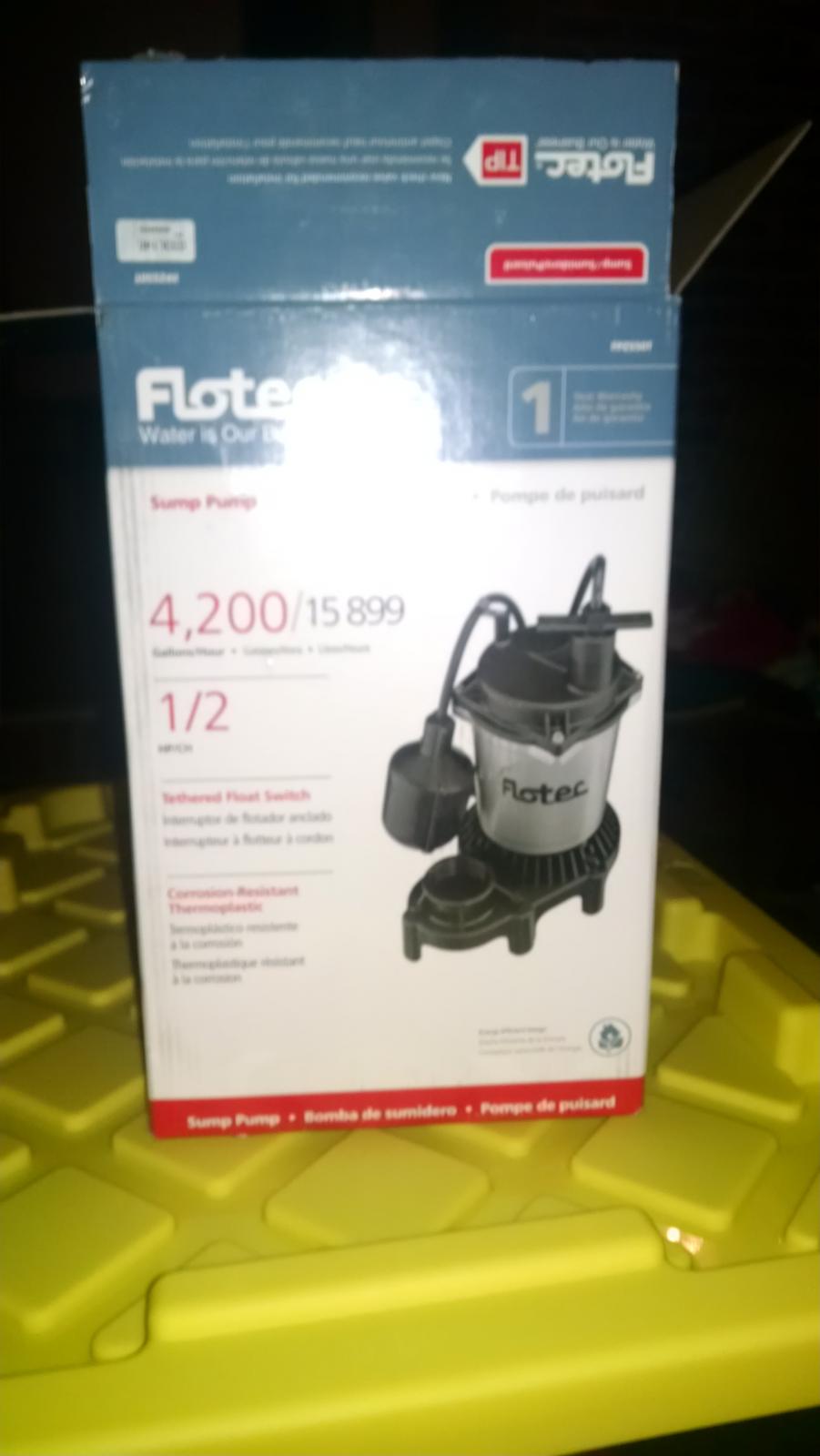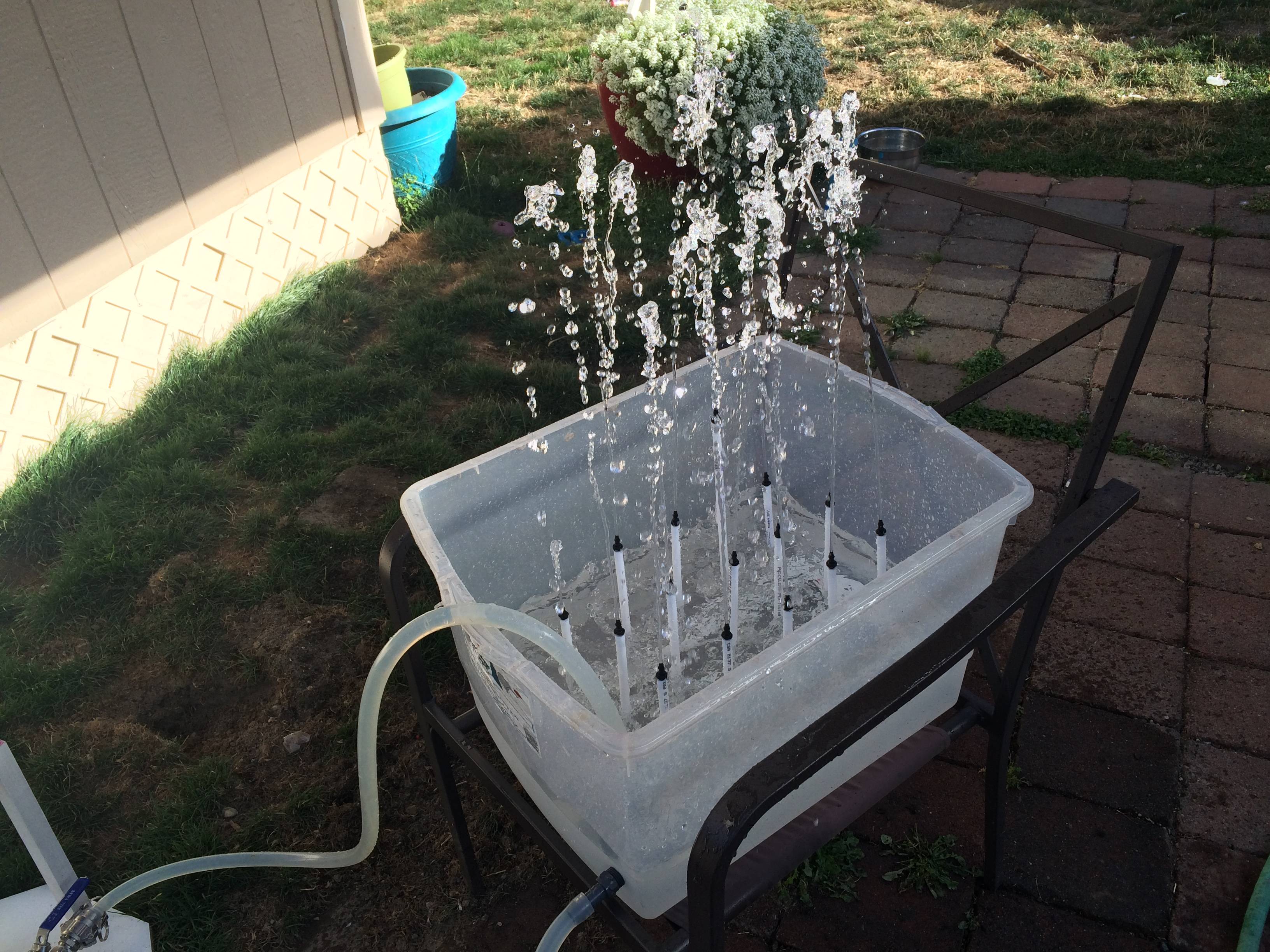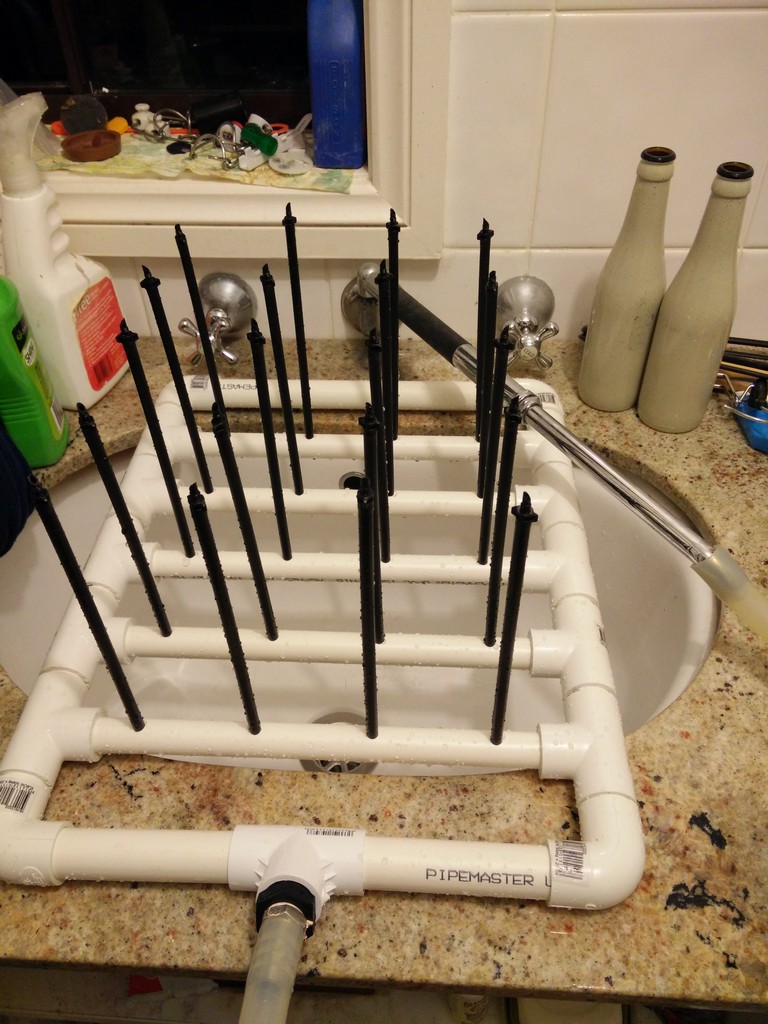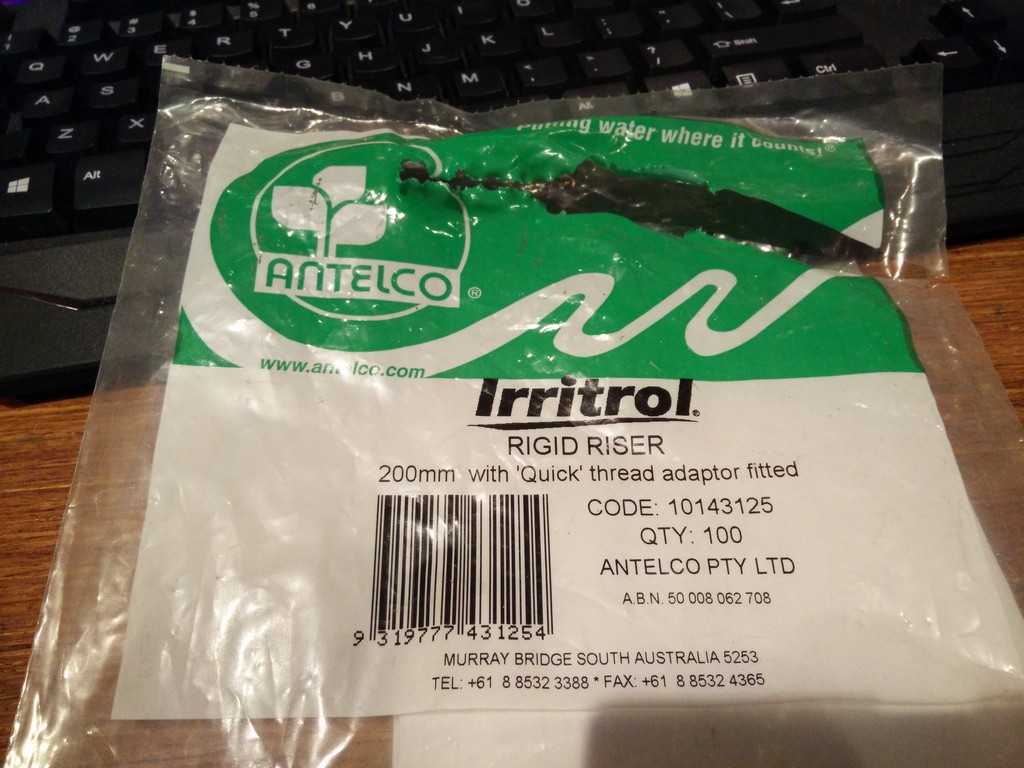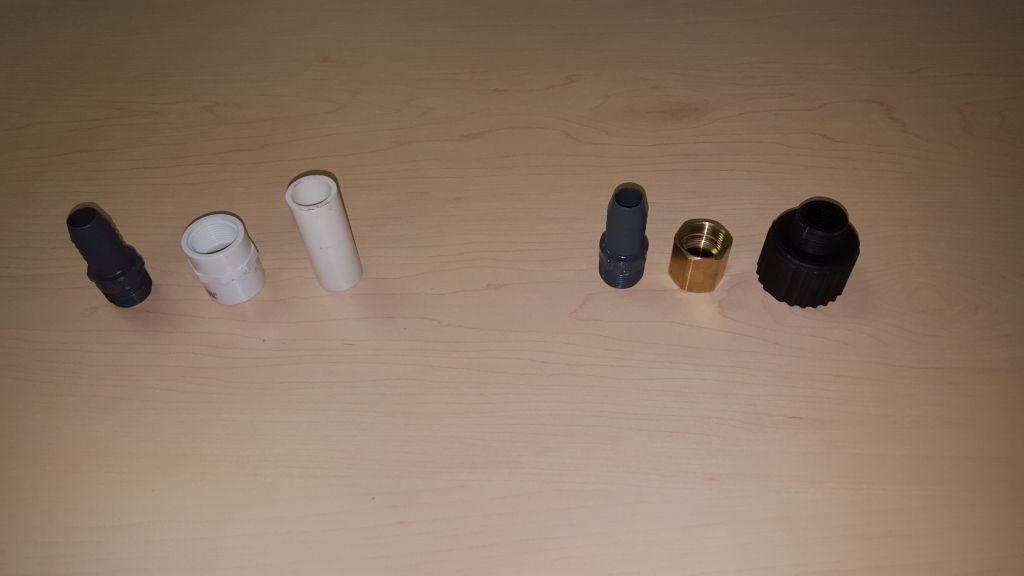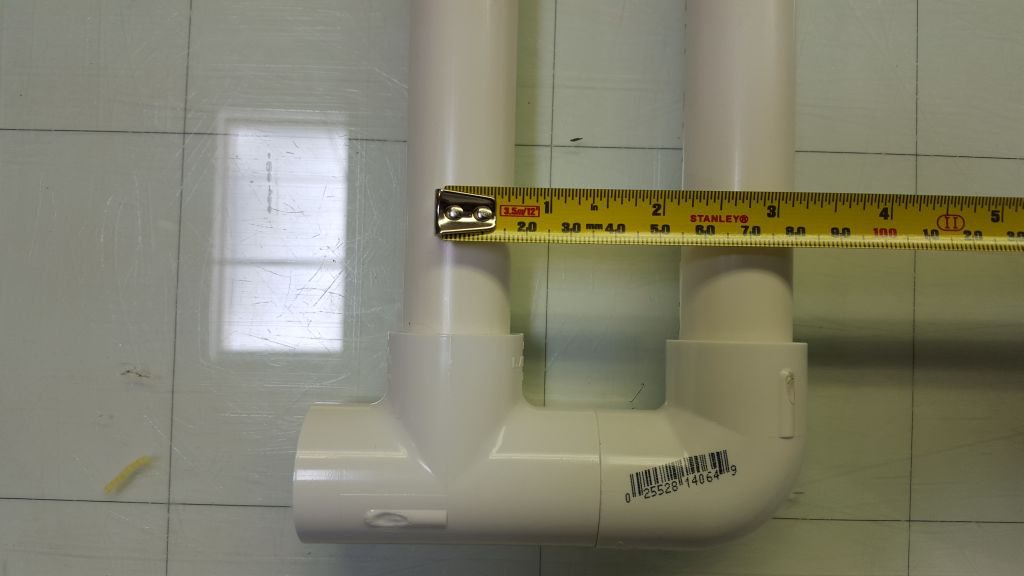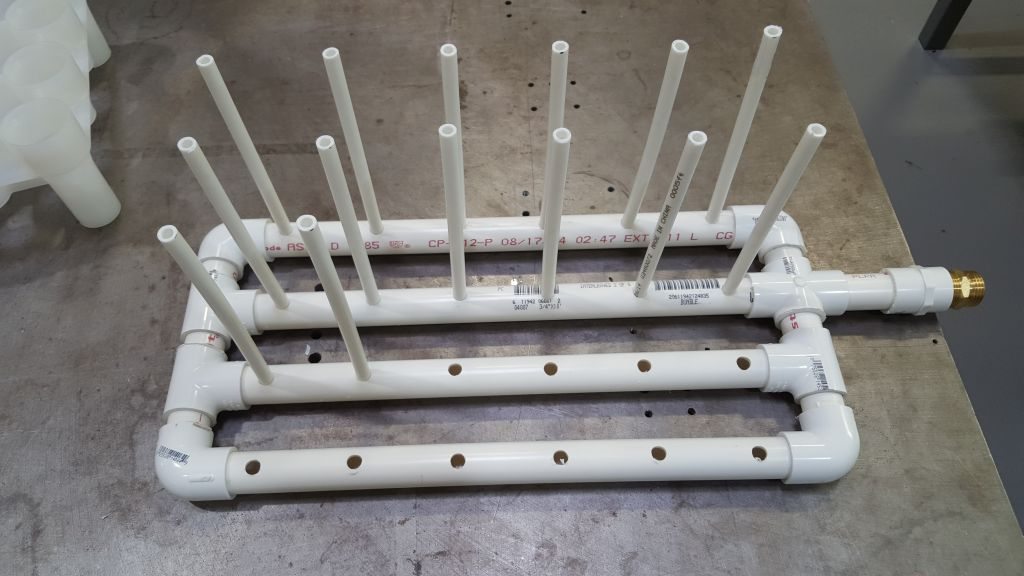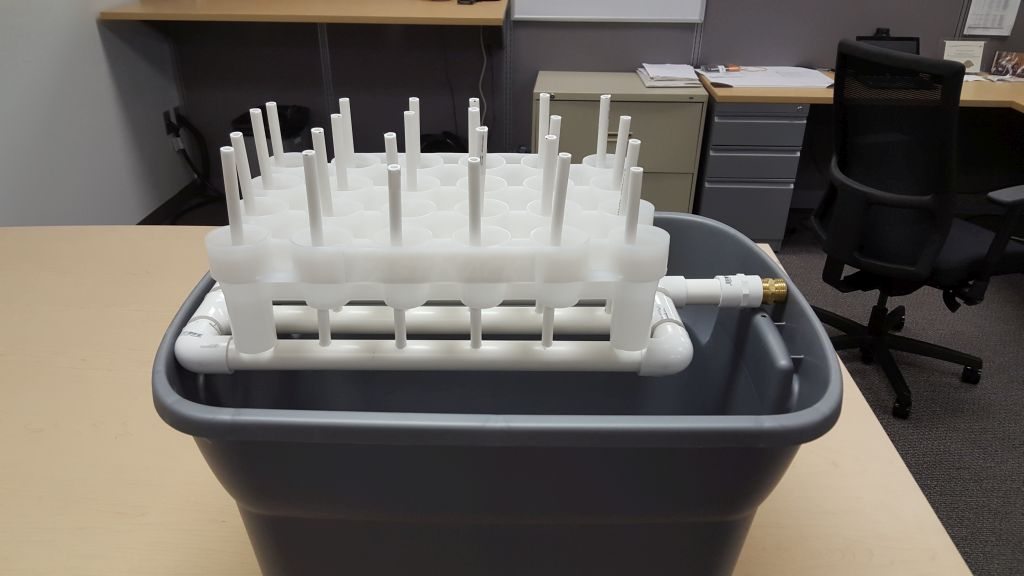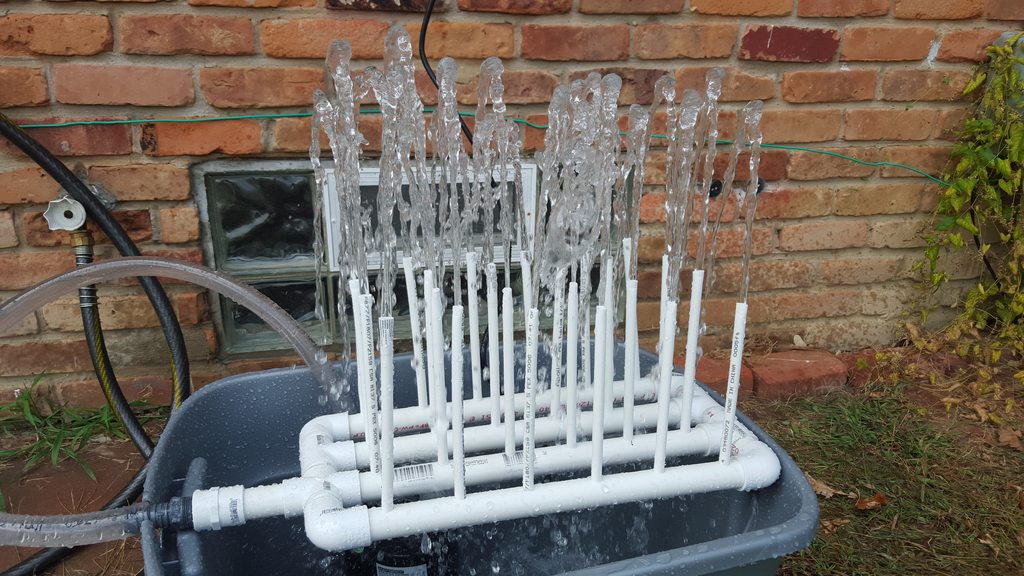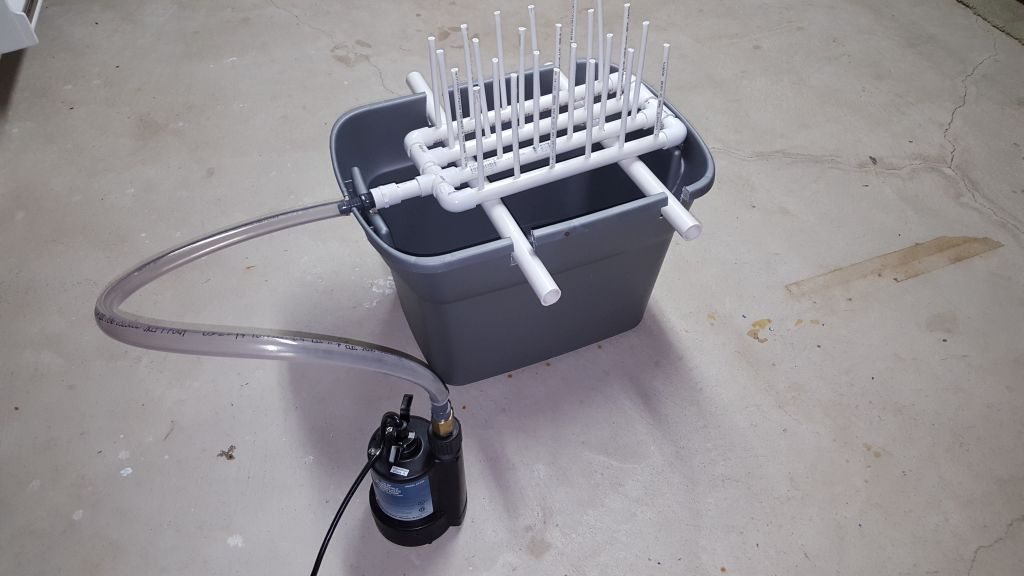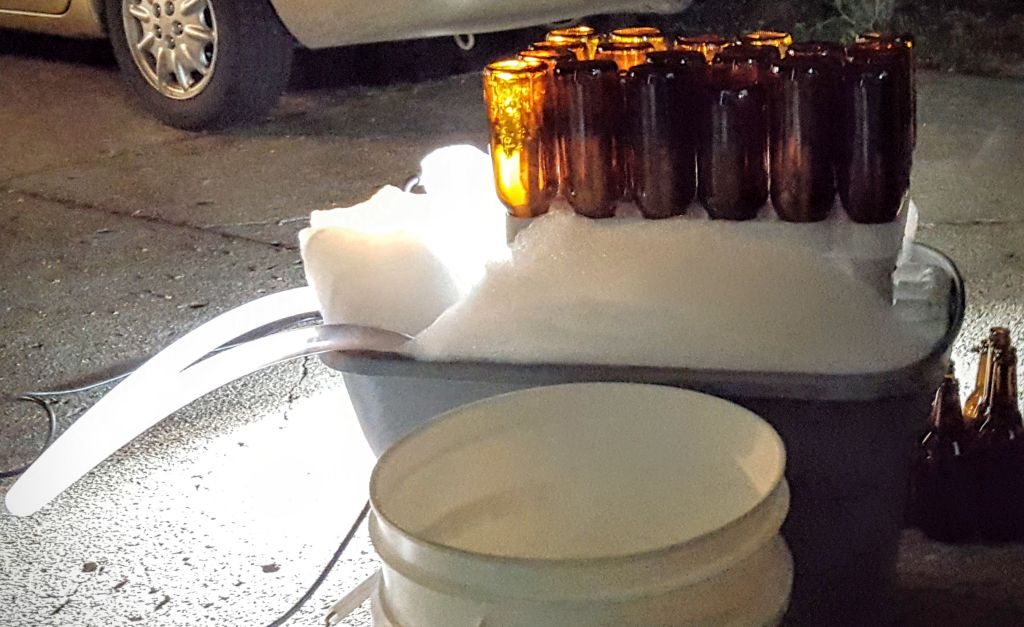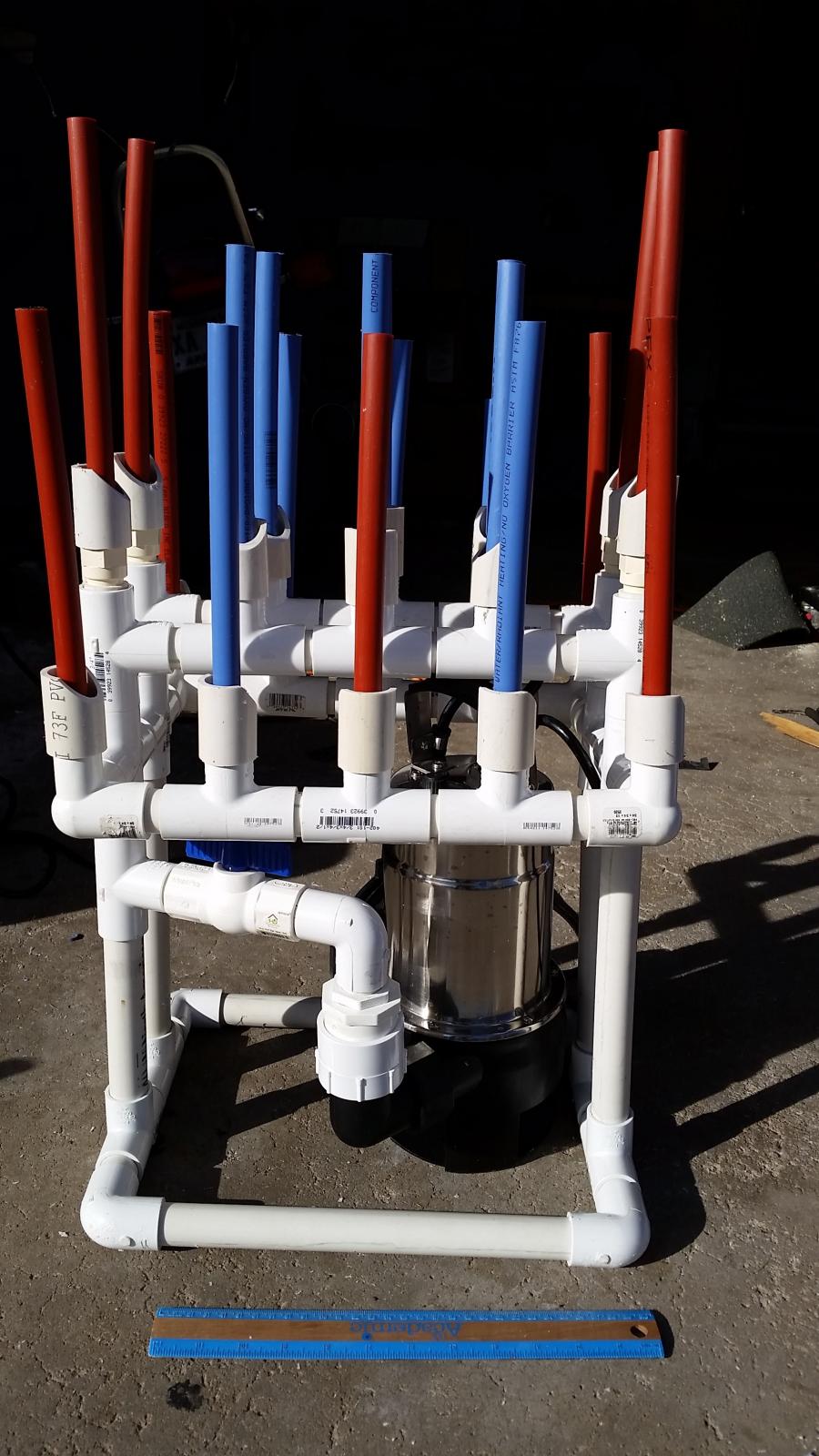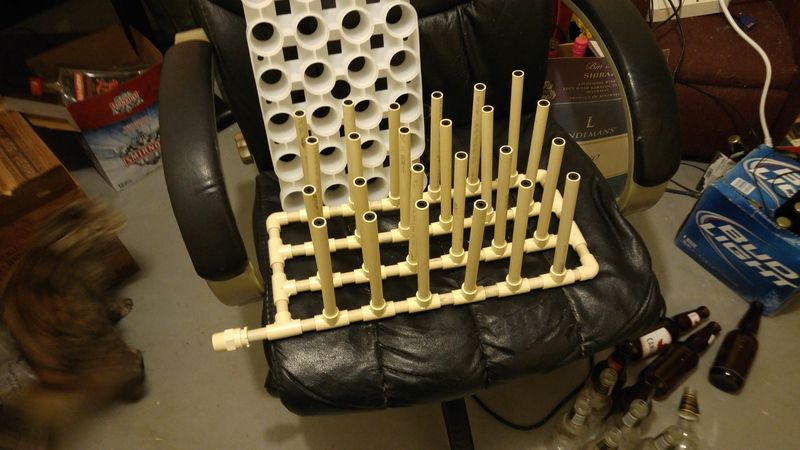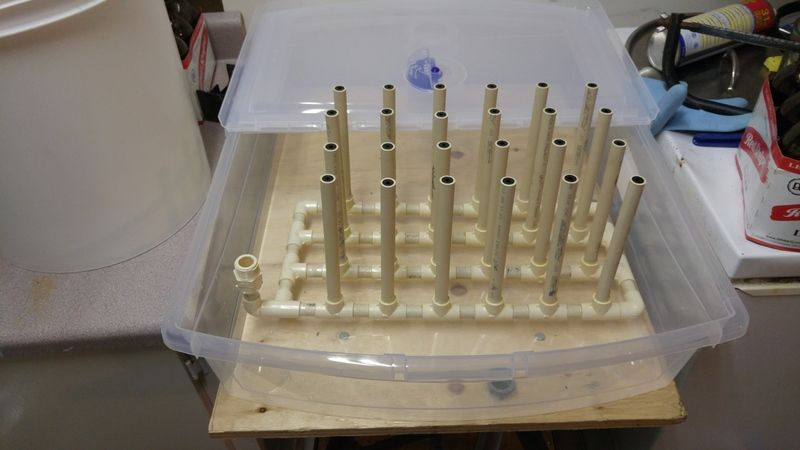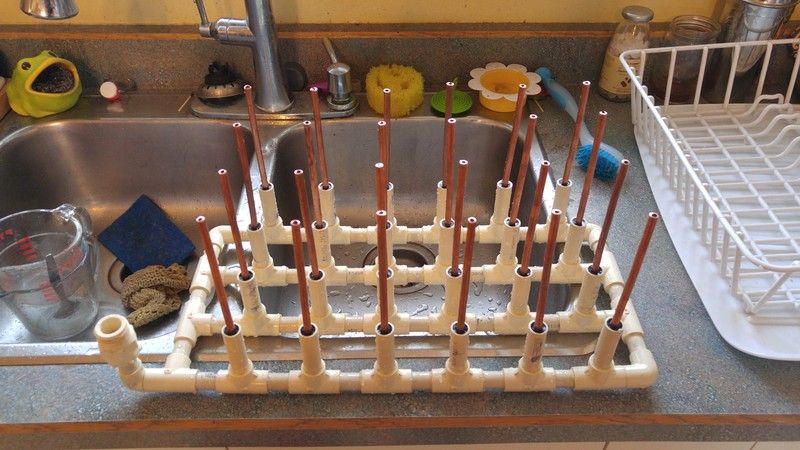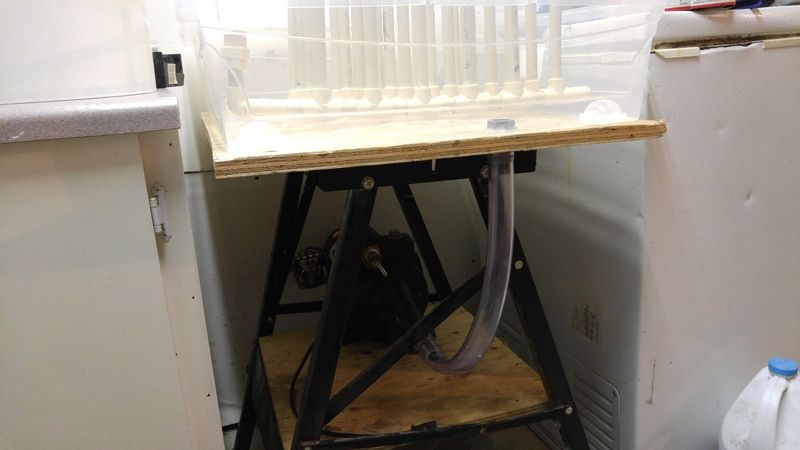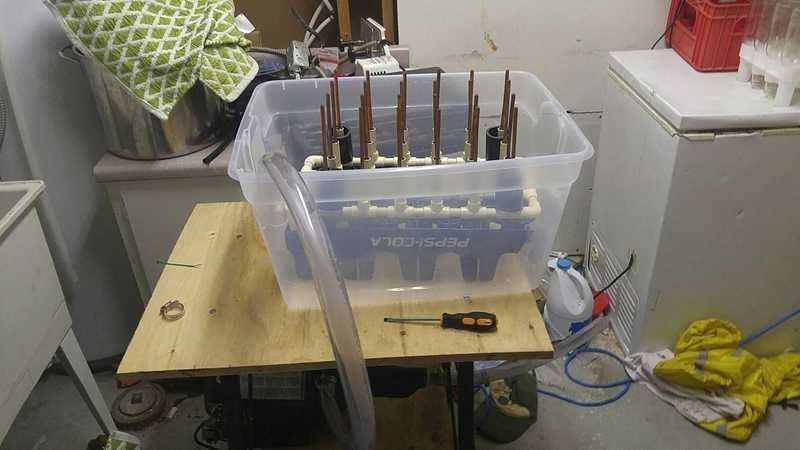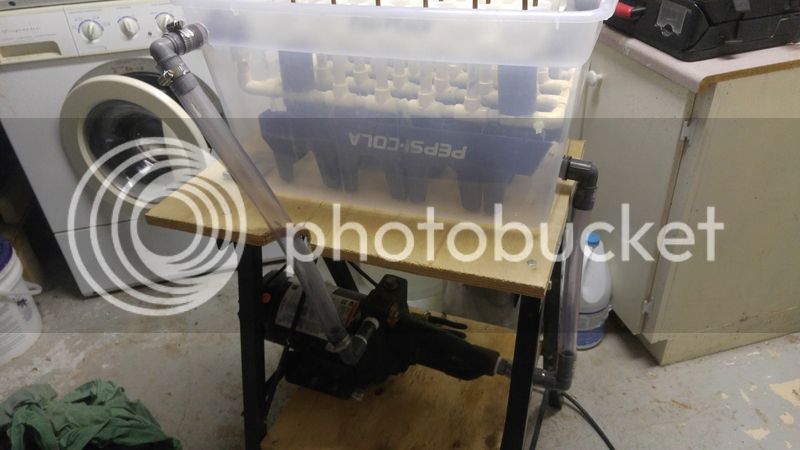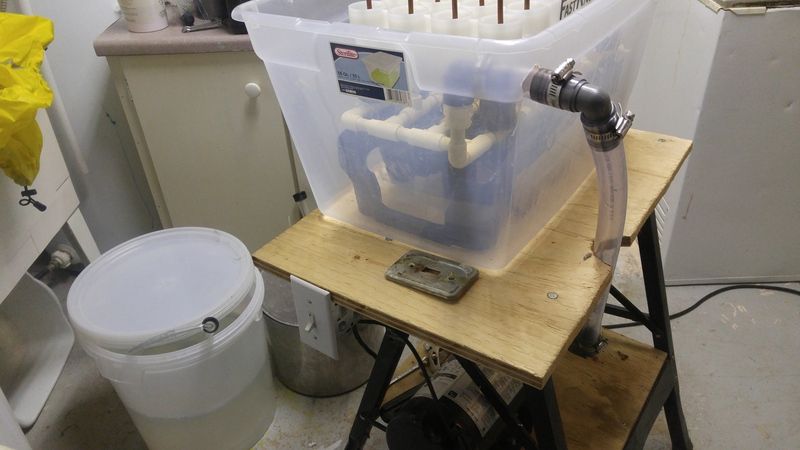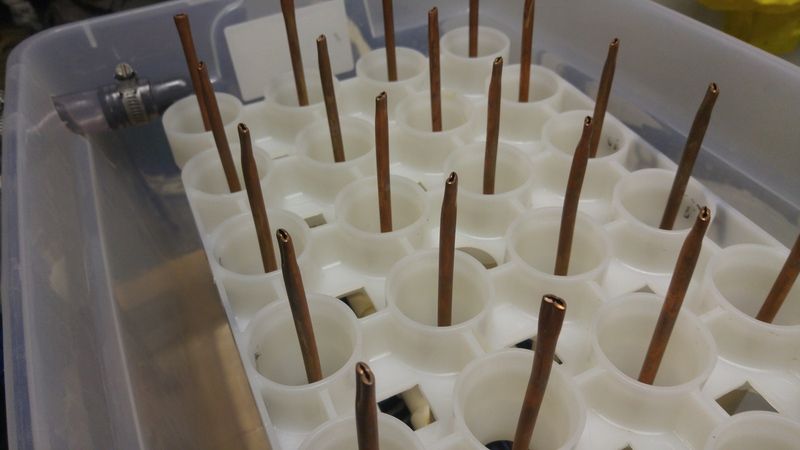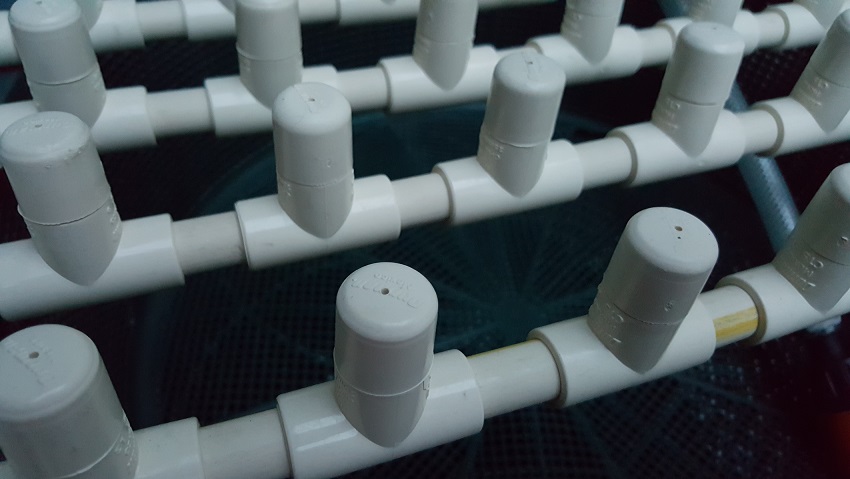I've finally (mostly) finished my own build and thought I'd share it here. Here is the completed manifold:
It was modeled after a mix of ideas, from Malfet's and also this video (
https://youtu.be/jSXpPCrLt7A), but changed to 4x6 to accommodate the use of the FastRack system.
After completion I tested it out, but found three problems:
- Because I chose to place the threaded input at the END instead of to the side of the manifold, it was just ever-so-slightly too long to fit in your average Rubbermaid container.
- The sump pump I had laying around turned out to not have the power to handle 24 risers, resulting in less than 2 inches of spray, not enough to reliably cover the inside of the bottles or dislodge dirt
- The 1/2" PEX didn't leave much room for air to escape and on some of my older non-standard stubby bottles, it actually formed a seal so it wouldn't work at all.
First fix was to find a container big enough for the manifold. Unfortunately the only one I could find was MUCH wider than I needed, but I made do:
Unfortunately I wasn't able to find 1/4" PEX anywhere for sale in Winnipeg, most hardware guys told me there wasn't enough demand so no one stocks it. Picked up some 1/4" copper and cut my risers, reused the 00 beveled washers to hold the new copper risers. To get this to work I had to sand the washers down a bit and also took the dremel to the inside of the remaining PEX riser to widen the ID just a hair, then heated the holy hell out of the washer to press fit it, I ended up with this:
This fixed the airflow issue with narrow-necked bottles, but did nothing for my lack of power. Around here, PEX ain't cheap, so with $70+ already invested in the PEX I didn't want to buy a new pump too, but luckily I had my old household water jet-style pump kicking around, which would have the power needed, but called for a redesign of the rest of my setup.
So I grabbed some scrap plywood and an old sawhorse I had kicking around and came up with this:
The return water hose isn't attached in that image, but exits the left of the pump and loops up and over the side to the threaded connector visible through the plastic container. I had this setup using a washing machine's water hose and here was the initial test:
This test left me with another problem, as well as a hint to its cause: in the last few seconds of the video, if you look closely you can see the 3rd riser from the left has less than 1" of water coming out of it. There were one or two other risers with the same problem as well. If I covered and uncovered them quickly they would sometimes prime and then flow normally, sometimes not.
The hint was that the water being gravity fed to the pump kept developing a cyclone and sucking air into the pump, led me to believe this was causing the loss of pressure and I figured it was due to the feed line being 1" ID vinyl tubing while the return line to the manifold was a washing machine line which was MAYBE 3/8" ID at best. So back to the design table!
I still wasn't happy with the extra wide container, especially since the drain wouldn't completely seal even with silicone, moving the container at all would cause a leak, so i tackled both problems at once.
While my manifold WAS slightly too large to fit the average container, this was only true of the BOTTOM of the container, because of the sloped sides, the manifold fit fine until the final 2-3" at the bottom. So I decided to switch containers and just rest the manifold on something. This had the added benefit of me being able to add more water/cleaner to the basin without getting too close to the draining bottles on the manifold. I also switched the drain from a bottom drain to a side drain, making it much easier to seal.
As you can see, I just used a plastic Pepsi bottle tray I had kicking around (after I trimmed one end to have it fit) and zip-tied the manifold to it. The black ABS on the 4 corners are removable risers I put in when I'm cleaning full size bottles to keep the neck of the bottle further away from the PEX riser (not needed with stubbies).
I ran a test with this setup and it worked BEAUTIFULLY! But I wasn't happy with the way the vinyl line kinked on both the feed and return lines due to the looping needed, so I picked up some elbows and also trimmed down the (now oversize) plywood top to come up with this:
For the last touches, added a switch (was previously just a straight plug-in setup)
and crimped the top of the copper risers
All that really remains to do now is just to add a 3-way diverter valve near the pump.
Since this setup is gravity fed to a jet pump, I can't fully empty the pump after use, which can lead to rust or dirt staying in the pump itself and contaminating whatever cleaner I run through the next batch of bottles after the pump has been sitting for awhile. With a diverter valve in place I'll be able to simply fill the tub with water, divert the flow and flush to pump out before use!
Starting 2 new batches of beer this week, can't wait to put this bad boy to use!
EDIT: Got home a short time ago and recorded the new setup operating. Unfortunately I can't drag it outside to show how high the spray goes now since it's winter here and damn cold.
But I *DID* take one bottle off in the video and it's impressive compared the the first attempt video above!



